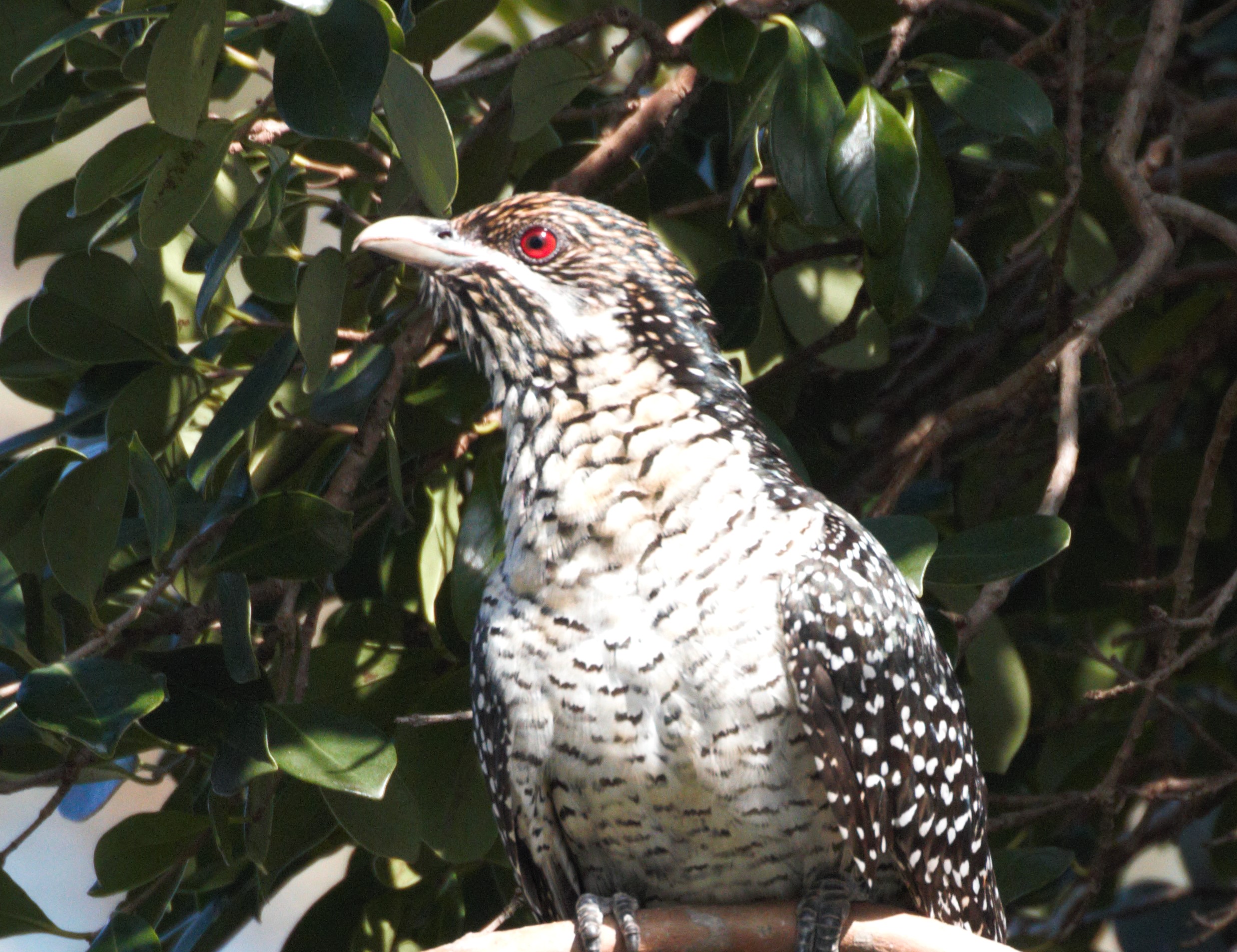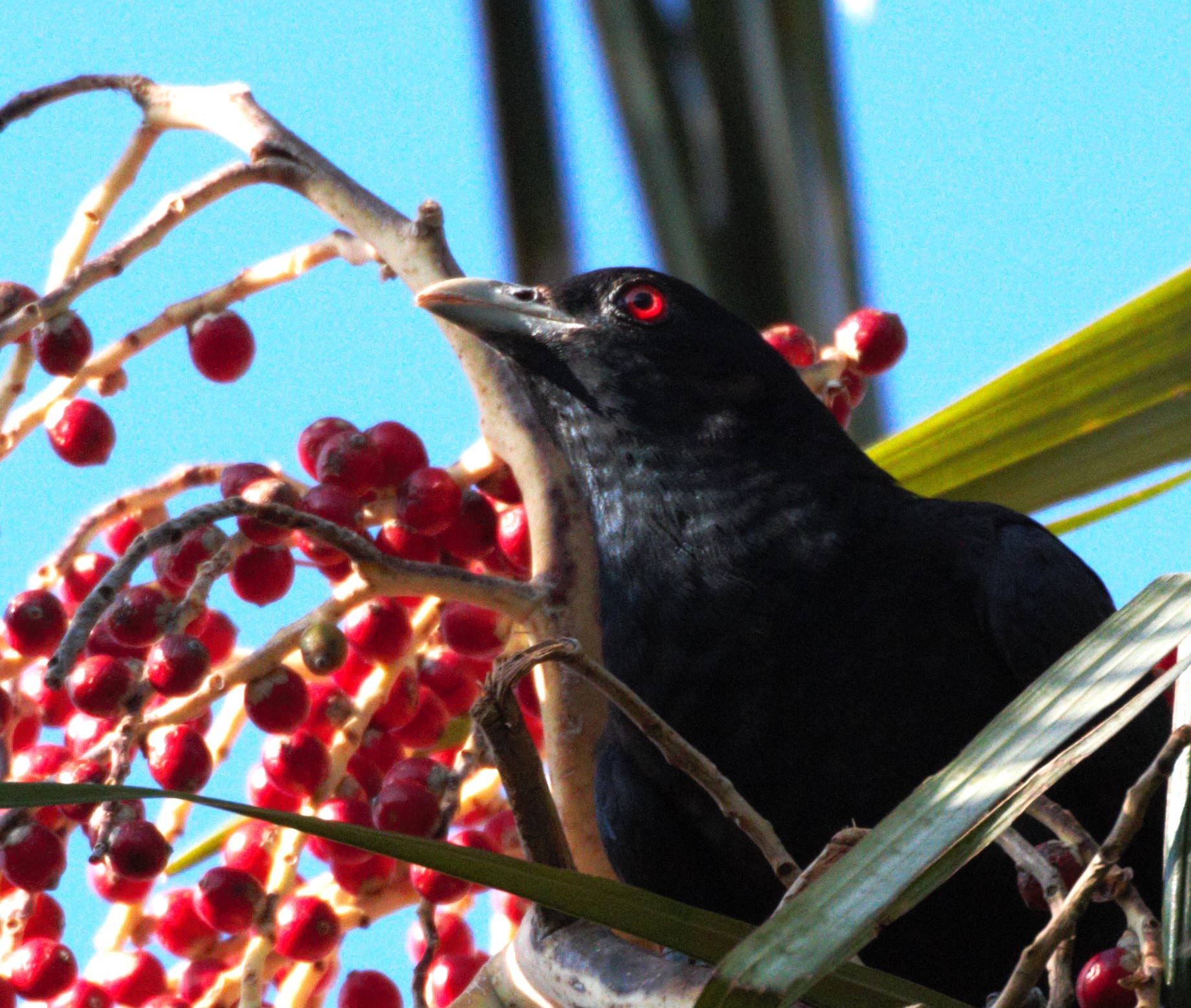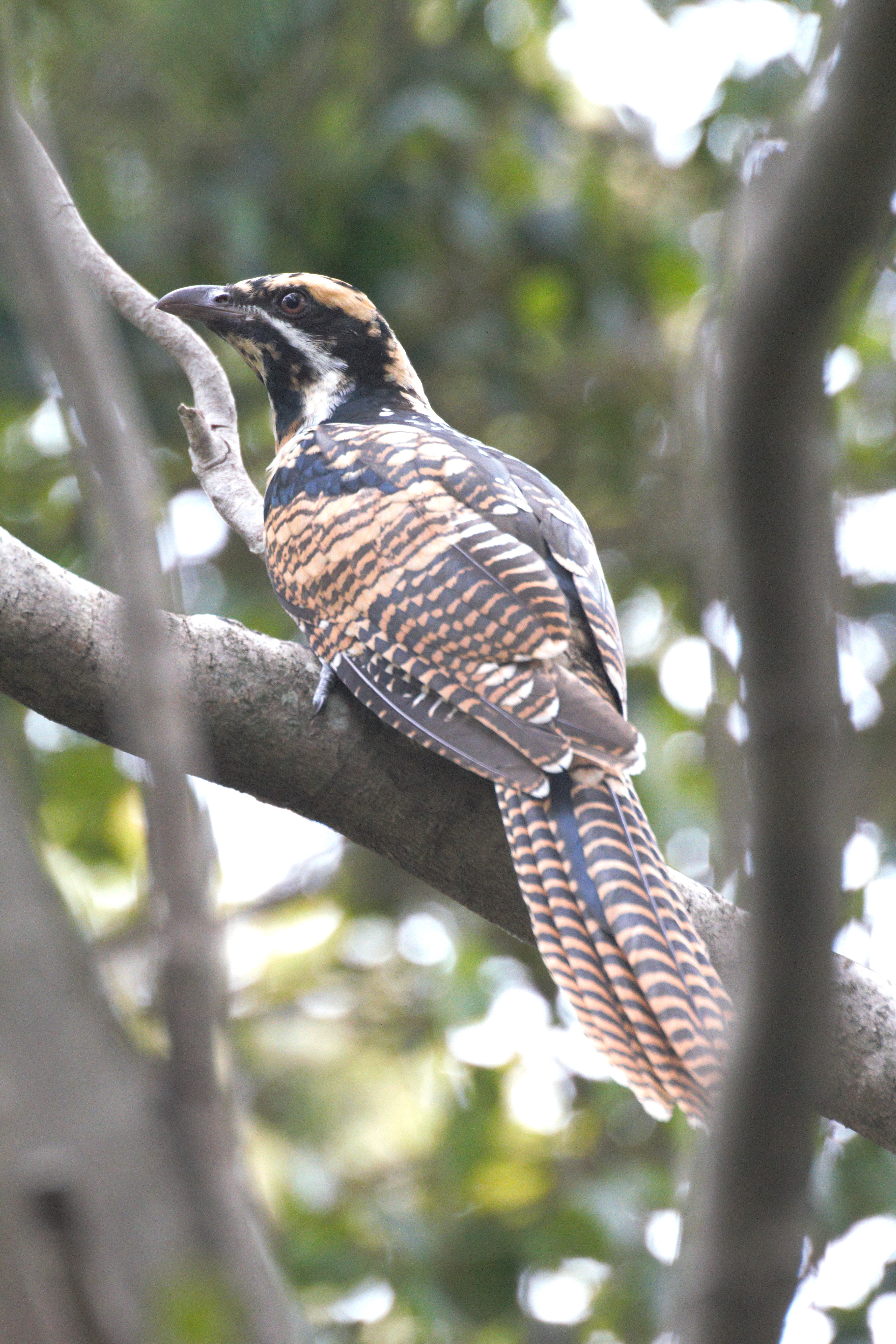Common Koel



Common name: common koel / cooee bird / rain bird / stormbird / eastern koel
Scientific name: Eudynamys scolopacea
Family: Cuculidae
Conservation status: The common koel is listed as Least Concern in Queensland (Nature Conservation Act 1992).
Description
Male common koels are glossy blue-black with a striking red eye and a long tail. Females are slightly smaller, with a black face, chestnut throat, red eye and olive or green beak.
Habitat and distribution
Common koels prefer leafy, fruiting trees on the fringes of woodlands, rainforests, streams and are commonly found in suburban backyards. They are migratory birds that travel to Australia to breed, arriving in south-east Queensland in spring and staying until March-April when they head back to Indonesia. Australian stopovers also include coastal areas in northern Australia and down south to about Nowra in New South Wales.
Life history and behaviour
Common koels feed almost entirely in the canopy of trees where they feed on fruits, especially figs.
When the summer rain comes, so does the distinctive call of the common koel,. These large cuckoos call during their breeding season from September to February, which corresponds to the summer rain season in many areas. You can hear them day and night, but their call seems especially haunting after dark. You can often spot males perched in high positions calling and displaying, but the common koel is shy and is unlikely to let you approach them.
Females leave the hard work to someone else, laying a single egg in another bird's nest and leaving them to raise her chick.
Listen
Listen to an audio clip of the common koel.
Related information
Pizzey G and Knight F 1997. The field guide to the birds of Australia. Harper Collins Publishers, Sydney.
Queensland Museum 1995. Wildlife of Greater Brisbane. Queensland Museum Publication, Brisbane.
Simpson K and Day N 2010. Field guide to the birds of Australia 8th Edition. Viking Australia.
† Requires an appropriate media player


